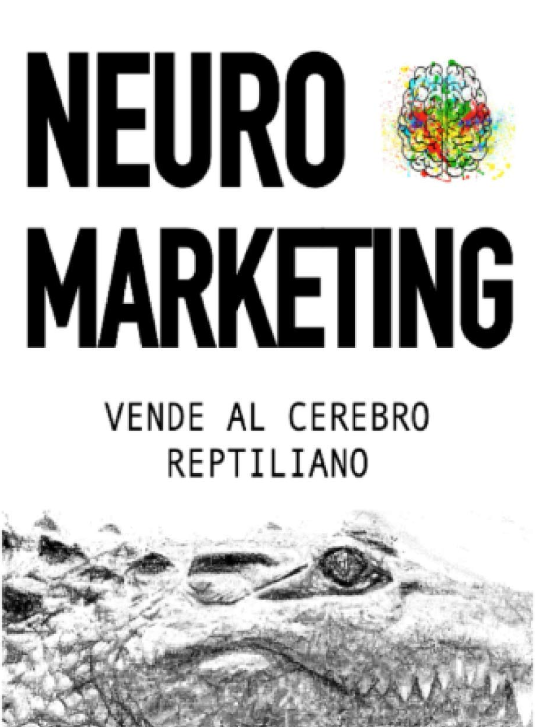- Index hide
The tendency to investigate the mind and the neural process, in order to understand purchasing decisions, is becoming stronger.
The neuromarketing market is expected to have a compound annual growth rate (CAGR) of 8.9% from 2020 to 2027.
A study from Harvard University reaffirms the strategy by revealing that 95% of purchasing decisions are made unconsciously.
“Neuromarketing: Sell to the reptilian brain” is a book that explores the idea of how the reptilian brain, or the oldest and most primitive part of the human mind, can be used in the marketing to reach consumers more effectively. As an academic and professional reference, this text is a combination of scientific research and practical strategies to apply neuromarketing concepts in a business environment.
The author begins by describing the structure and functioning of the human brain, emphasizing the importance of the reptilian brain in decision making and purchasing behavior. He then delves into how neuromarketing can be used to stimulate and activate that same reptilian brain to influence the decisions of potential consumers. It is a way of going back to the beginnings of commercial life.
An interesting aspect is how certain stimuli that activate the reptilian brain are demonstrated, such as music, color and the shape of products; a key factor is understanding how these stimuli can be used to increase the likelihood that a consumer will buy a product. In addition, it focuses on the importance of the customer experience and how creating a positive customer experience can be crucial to stimulating your reptilian brain and improving the chances of sales success.
This book also includes a detailed section on how neuromarketing can be applied to different industries, including advertising, retail, banking, and services.
Jonathan Benito Sipos provides concrete examples of how different companies have successfully used neuromarketing to improve their sales results. This is useful for readers who are looking for concrete ideas and strategies to implement this type of strategy in their own business environment.
Another positive aspect is the clear and accessible writing with which it is learned, since the text itself is easy to understand, even for those who do not have previous knowledge in neuroscience or marketing. The author uses clear and concise language and complements his argument with examples and case studies.
However, some readers might argue that the exclusive focus on the reptilian brain might be limiting and not fully capture the complexity of human decision making. It all depends on the needs to be mapped and the way in which marketers adopt the best of each professional vision.
Now read:
Book of the day: “The myth of the entrepreneur”
Book of the day: “Monetize yourself: How to earn money on social networks with your personal brand”
Book of the day: “Numbers count in marketing”


